From 1 May to 9 May. The tradition of military parades in the USSR and Russia
When they came to power, the Bolsheviks very quickly realized that on militia-type voluntary units alone, such as the working Red Guard, you would not build the defense of a revolutionary state. Soviet Russia needed armed forces that could effectively counter all the numerous challenges of that time. But the creation of the Red Army demanded a return to the classical principles of military organization, military art. Naturally, the new Red Army also needed its own attributes, from the uniform and insignia to the awards ceremonies and military parades. The parades of the new government were needed to underline the full power of the armed proletariat, to show the people the seriousness of the dictatorship of the proletariat, and to the enemies the futility of any encroachments on the sovereignty of the first in the world. stories state workers and peasants. Therefore, less than a year after the October Revolution, Moscow hosted the first military parade in the post-revolutionary history of the Russian state.
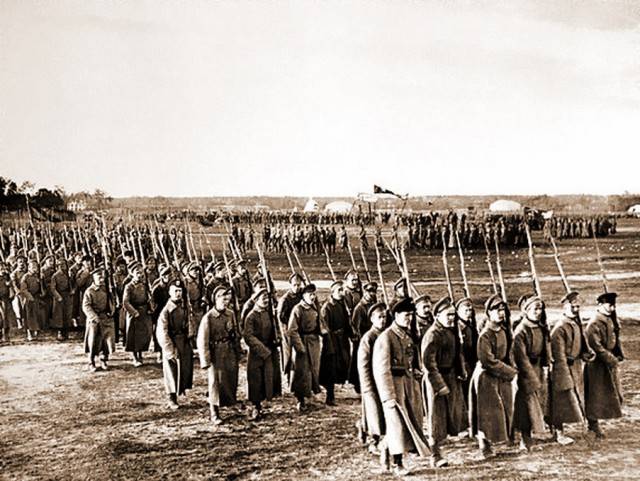
Red Square and the famous Khodynskoye field were chosen as the venue for the parade - the very place where 18 (30) of May 1896 took place the famous crush - the tragedy that took 1379 people to life. The crush occurred as a result of a mass gathering of people celebrating the coronation of Nicholas II. It is symbolic that after 22, the troops of the new Russia — the Red Army — marched along the Khodynka Field. Nicholas II and his family were still alive, and celebrations were held in Moscow in honor of 1 of May - the International Day of Workers' Solidarity. To participate in the solemn military parade were built troops of the Moscow garrison. The parade was commanded by the commander of the famous Latvian rifle division, Joachim Vatsetis, a former tsarist colonel, who had sided with the Bolsheviks and headed one of the most combat-ready and devoted new government units of the Red Army. The parade was taken by the People’s Commissar for Military Affairs Leon Trotsky. Vladimir Ilyich Lenin himself, his wife Nadezhda Krupskaya, sister Maria Ulyanova, commander of the Moscow garrison Nikolai Muralov watched the parade.
Having marched over Red Square, the Red Army men headed towards the Khodynka field. The weather on this day was not spring at all, it was snowing in Moscow. Of all the military units that were to take part in the parade, only one Latvian regiment appeared on the Khodynka field in time. As a result of all the delays, the parade itself began rather late. About half past four, unexpectedly for everyone, a car with Vladimir Lenin appeared on the field. From the memoirs of N. Muralov it is known that after inspecting the military, Lenin found them “not very accurate”. After Lenin and his companions took their places on the podium, the parade began.
The first were the columns of cadets, followed by foot units and cavalrymen. In addition, two field guns took part in the parade, each of them carried a cart of four horses. Famous cycling troops or the so-called “bike-kickers”, who played a very important role in the first revolutionary years, closed the solemn procession. The parade was accompanied by military marches and revolutionary songs performed by the 11 orchestra of the Grenadier Fanagori regiment led by conductor Lyudomir Petkevich.
According to eyewitnesses, the parade was quite short and small. For the first time in history, after a military parade along the Khodynka field, a civilian demonstration came from Red Square. Took place in the evening aviation a holiday with the participation of Felix Dzerzhinsky.
Although at the parade there were certain problems related to the inconsistency of actions, the demarche of the Latvian riflemen, nevertheless, even then eyewitnesses noted the power of the Red Army columns passing through Red Square and the Khodyno Field. In particular, this was recalled by Robert the Bruce Lockhart - a Briton who visited Moscow and was an eyewitness to the first Soviet military parade. Lockhart recalled that German ambassador Mirbach was present at the parade. At first, Mirbach smiled haughtily, but as he passed through the columns of the Red Army his face grew more serious. Two months later, on July 6 of the year 1918, Mirbach will be killed by the Left SRs.
May 1 Parade 1918 was the first official event of this kind for the newly created Red Army. Date of the parade was not chosen by chance. In the first post-revolutionary year, Soviet Russia had not yet developed its own tradition of state and military holidays, so the military parade was decided to coincide with the main holiday for all revolutionaries of that time, May 1.
The history of the celebration of 1 in May in the Russian Empire began after the congress of the Second International in Paris decided to hold annual demonstrations in 1889. After the October Revolution, 1 May got its official name “International Workers' Solidarity Day” and, starting from 1918, became a day off.
In Soviet Russia, 1 May 1918, in fact, was a celebration of the new government. 12 April 1918 of the Year “By the Decree on the Monuments of the Republic” a special committee was created in Moscow, the purpose of which was to implement the idea of monumental propaganda put forward by V. Lenin. To celebrate, the First Capital was supposed to get rid of all the monuments alien to the new ideology and to be decorated with new monuments and new symbolism reflecting the ideas and feelings of the revolutionary masses.
On April 27, the Izvestia newspaper published an appeal by the All-Russia Central Executive Committee with the text of the main slogans that were to be used to celebrate 1 on May throughout the country.
However, in fact, the preparations for the celebration of 1 in May of 1918 of the year were thwarted due to the lack of necessary funding and a clear implementation plan. It is known that before the start of the demonstration on Red Square, Vladimir Lenin personally took part in the demolition of the monument to Grand Duke Sergei Alexandrovich on the territory of the Moscow Kremlin. According to recollections of the Kremlin commandant P. Malkov, seeing the monument, Lenin ordered to bring the rope, made a loop and threw it over the monument, after which “Lenin, Sverdlov, Avanesov, Smidovich, other members of the Central Executive Committee and Council of People's Commissars and the staff of the small government apparatus harnessed the ropes, put on light , pulled, and the monument collapsed on a cobblestone. "
It should be noted, and the fact that the first for the new state, May Day was held in a very difficult political situation. The Brest-Litovsk peace treaty, extremely unprofitable for Russia, signed on March 3, 1918, was accompanied by the beginning of a civil war. German and Austrian troops continued their offensive on the territory of Ukraine, in the Crimea and in southern Russia. While the parade was marching in Moscow, the occupants occupied Taganrog, and 7 days later, Rostov-on-Don.
Despite all this, in the celebration of 1 in May of 1918, it is possible to note those features that will then regularly accompany May Day celebrations throughout the entire history of the USSR: mobilizing state and party bodies to organize celebrations, political mobilization of the masses in the name of ideas and goals, participation of the intelligentsia, artists, writers, musicians, theatrical figures in the organization of the celebration of May Day in accordance with a given ideology and aesthetics, as well as a huge The contradiction between the main role of the masses proclaimed from the stands in the conduct of the holidays and the total control that accompanied all this. Among the distinctive features, it is impossible not to note the unacceptability of participation in official events of the opposition forces, as well as the development of a specific language to control the masses with such terms as “mass”, “mass media”, “activist”, etc. Already in 1918, the official celebration of 1 May was completely monopolized by the Bolsheviks.
Despite the fact that the 1 in May 1918, the Bolsheviks encountered during a military parade with a number of unpleasant incidents, it was decided to hold such events regularly. The Bolsheviks in general, to mass actions, since such events played the most important role of rallying the masses, they formed in them a sense of common identity, belonging to a single and common cause for all. The next military parade in Moscow took place on November 7 1918 of the year and was timed to coincide with the first anniversary of the October Revolution. Since that time, military parades in Soviet Russia, and later in the Soviet Union, became regular. Traditionally, troops marched across Red Square at least twice a year - on November 7 and May 1. In addition, there were also "thematic" parades dedicated to specific events. For example, on June 27, the 1920 of the year in Moscow hosted a parade in honor of the congress of the Second International.
From 1 May 1922, the ritual of holding military parades on Red Square included taking the oath by young Red Army men. This tradition existed 17 years - until 1939 year. Before 1925, the parade commanders and military commanders who had received the parade carried out a pedestrian round of the Red Army columns. 23 February 1925 of the year, at the parade in honor of the 7 anniversary of the creation of the Workers 'and Peasants' Red Army, who received the parade, Mikhail Vasilyevich Frunze, for the first time drove past the columns of the Red Army on horseback. From that time on, the tradition of parades was entered into by the tradition of military parade driving around on horseback to the parade host and commander of the parade. Clement Voroshilov, who replaced Mikhail Frunze who died in the same 1925 year, also took parades on horseback.
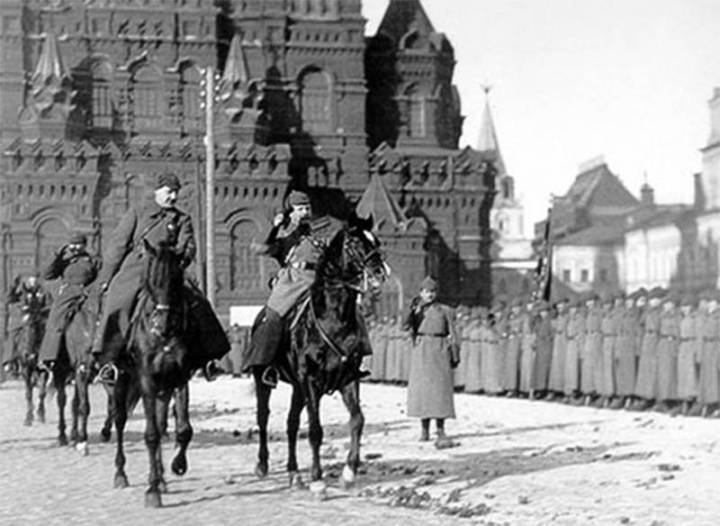
An important role in shaping the tradition of military parades in the Soviet Union was played by the parade on May 1, 1925 - the last military parade hosted by Mikhail Frunze. At this parade, the troops passed in a new "chess" order. The first were infantry units, followed by cyclists, cavalry, and then armored vehicles passed Tanks and armored cars. Since that time, the participation of military equipment in the parades on Red Square has become mandatory. This tradition is preserved, as we know, at the present time.
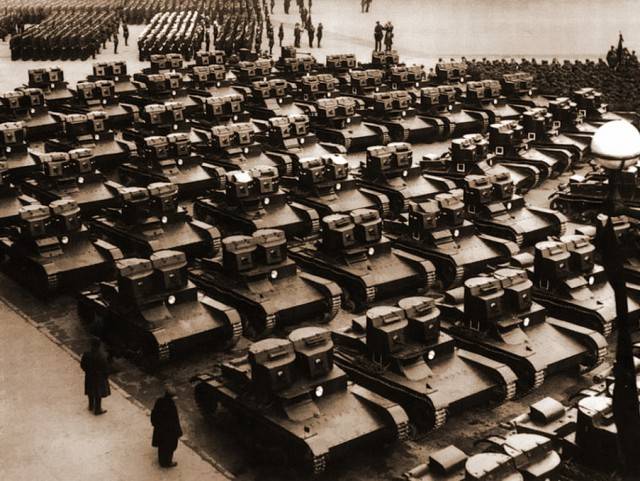
Some parades, held in the first two decades of the Soviet regime, were striking in their scale. For example, in the 9 commemorative parade of February 1934 of the year, timed to the XVII Congress of the CPSU (B.) And lasting three hours of a military parade, 42 thousands of troops, including 21 thousand troopers, and soldiers of other military branches, participated. On Red Square, 1700 tanks passed that day.
The last "peaceful" military parade was the 1 parade on May 1941 of the year. Before the war, there were less than 2 months. Interestingly, representatives of the German Wehrmacht were present as guests at the 1941 May Day military parade. Two months will pass and these people will fight against the Soviet Union, and Hitler's Germany will become the worst enemy of the Soviet country.
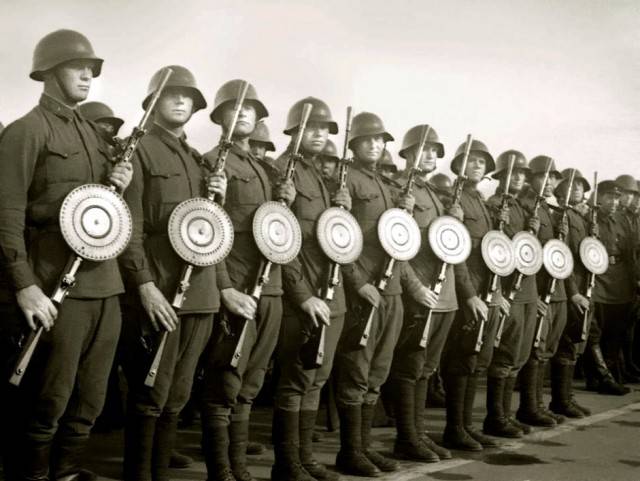
A colossal role for raising the morale of the Red Army, who fought against the Nazi invaders, was played by a military parade held on November 9, 7, in Moscow, defending against the onslaught of the Nazi armies. Columns of Red Army soldiers straight from the parade were sent to the front. The parade was attended by about 1941 thousand people, and the most numerous part was represented by units of the troops of the People's Commissariat of Internal Affairs of the USSR. The tradition of holding military parades on Red Square was interrupted for three terrible military years, and the next military parade was held only on May 28, 1, when the enemy was practically defeated.
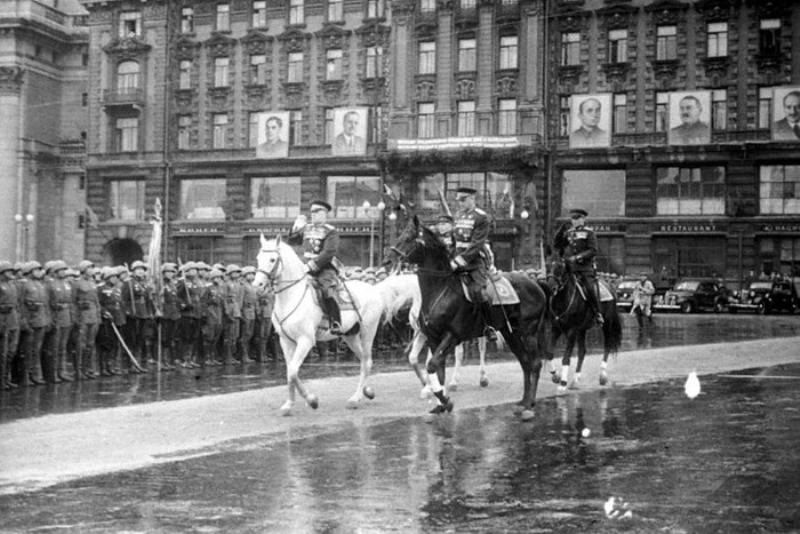
24 June The 1945 of the Year on the Red Square was the Victory Parade - a truly landmark event in the history of the country. 1 May military parades were held up to 1968, and after 1968, 1 in May, only columns of Soviet workers passed through Red Square. Military parades began to take place on November 7 and May 9 - in honor of the anniversaries of the October Revolution and the Victory over Germany.
In modern Russia, military parades are held on May 9, as well as in honor of specific events. For example, in Rostov-on-Don, on May 5, a military parade was held in honor of the 100 anniversary of the existence of the Southern Military District. Their "departmental" parades are conducted by the Ministry of Internal Affairs of the Russian Federation, other power structures. But the most ambitious military parades of modern Russia, which take place on Red Square in the presence of the country's president and numerous foreign guests, are, of course, parades in honor of the anniversary of the Great Victory. 9 May 2018 on the Red Square will host the next military parade in honor of the 73 anniversary of the victory in the Great Patriotic War.
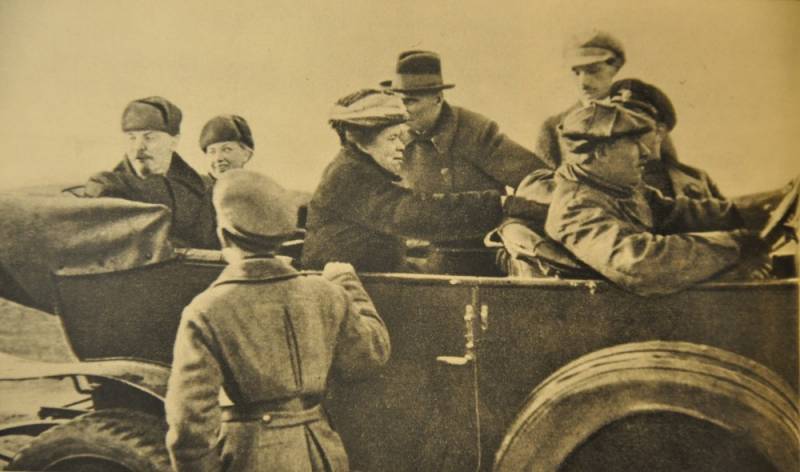
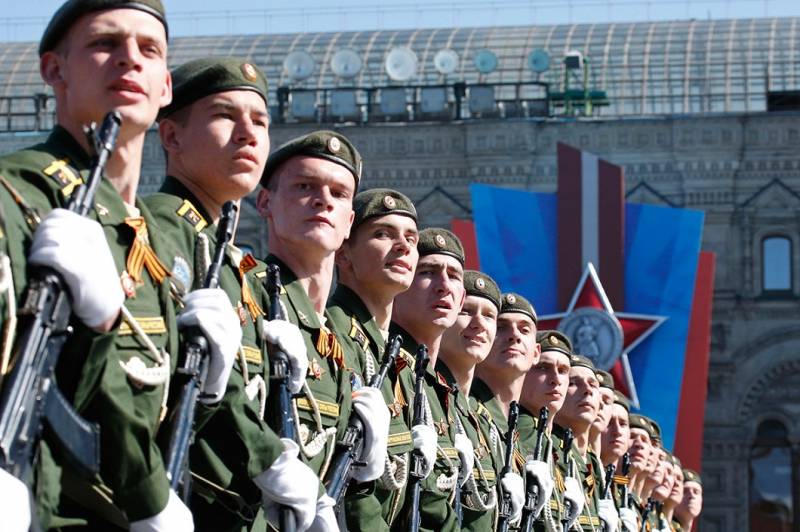
Information